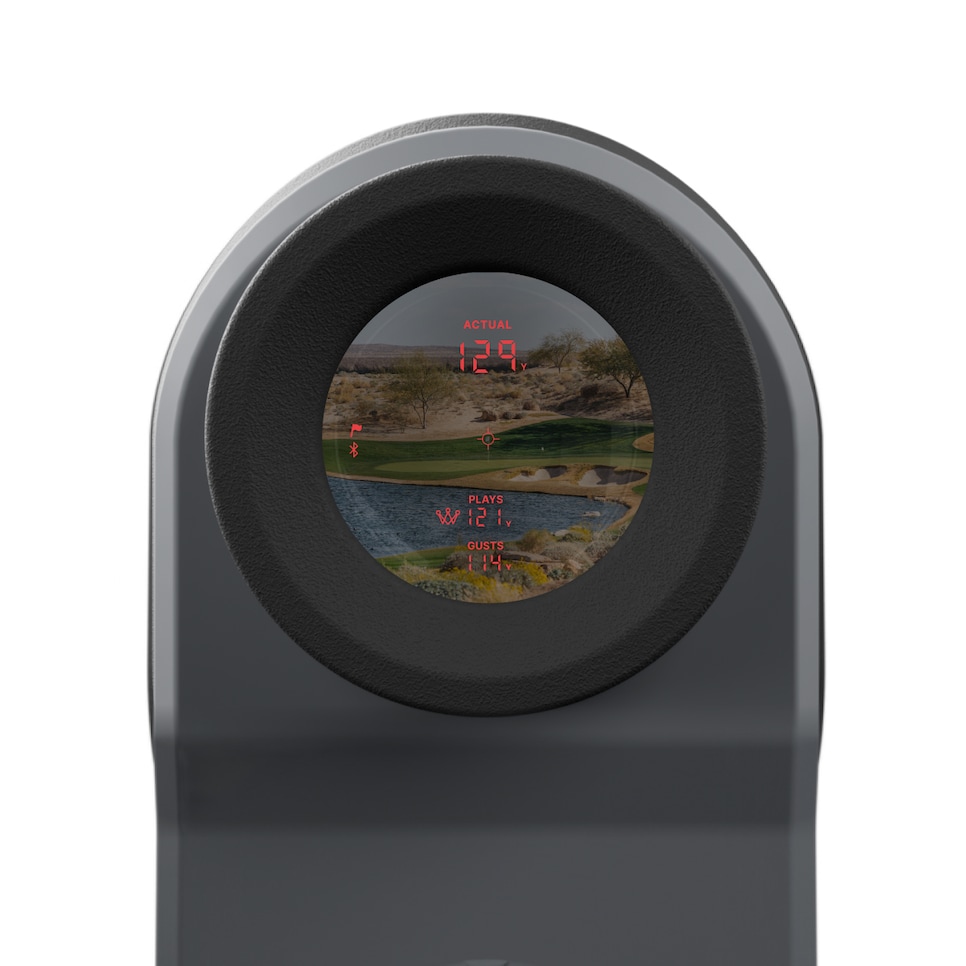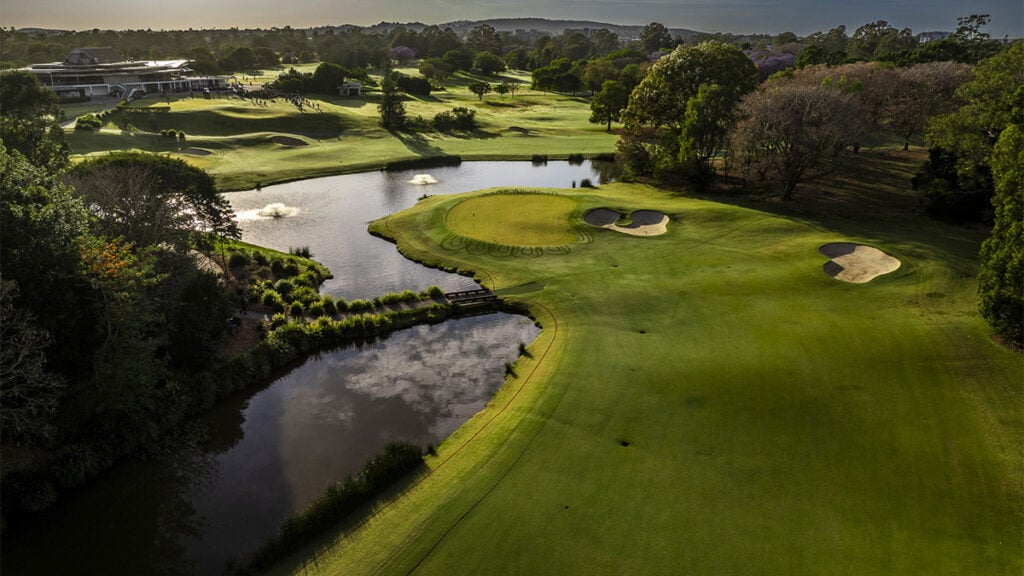WHAT YOU NEED TO KNOW: Arccos, the company founded on GPS-driven stat-tracking sensors, released its first laser rangefinder, the Arccos Smart Laser Rangefinder. The device leverages the company’s database and expertise in course features as well as its live weather information to provide “plays like” distances to go with the laser GPS readout. Although it provides an off-switch for tournament mode, the readout reveals a distance readouts that are the result of an algorithm calculating the effects of wind speed and direction (including gusts), slope, temperature, humidity and altitude.
PRICE: $300, including one year of the Smart Laser subscription, which renews at $200 per year. Optional $450 bundle includes Smart Laser and Arccos Smart Sensors. Available late October.
3 Cool Things
1. Unlike other rangefinders. Arccos, which has made strides in not only informing golfers of performance but through elements in its app like Arccos Caddie actually enhancing knowledge and strategy, believes its new Smart Laser Rangefinder changes the category. It does so by processing all available information to decipher how a certain distance shot actually plays. The key is an algorithm that incorporates live data regarding slope and weather, including wind gusts, to arrive at a “plays like” distance that goes beyond typical rangefinders. The key is Arccos’s established GPS-driven tracking sensors that have accumulated some 3.9 trillion data points over the last decade, says company co-founder and CEO Sal Syed.
“When golfers have been making decisions, there’s so much that goes into that decision making, but as far as the human mind goes, it’s hard to really assess all those factors,” Syed said, referencing an Arccos database that includes more than 25 million rounds and detailed maps of more than 40,000 courese. “We know we can help the golfers do that better, and so we’re introducing a smarter rangefinder. This is the first connected rangefinder.”

Syed’s point is that the number of factors is an array that ranges well beyond slope to include hole direction, wind direction, temperature, humidity and even localized gusts. All of that information exists, and Arccos’s Smart Laser Rangefinder is designed to process all of it instantly through the use of a specialized artificial intelligence program. The point of this device, like Arccos’s flagship stat-tracking sensors, is to help golfers make better decisions about their game and ultimately each specific shot, Syed said.
“We’ve simplified all that information,” he said. “We’ve taken something that is actually super complicated and presented it in an immediately actionable way.”
2. Like other rangefinders. While the Smart Laser Rangefinder’s AI-driven algorithm turns the device into a seemingly infinitely and instantly wise caddie, the device itself as a rangefinder features all the important aspects of the best rangefinders. That includes target-seeking vibration, accuracy to plus/minus one yard, a 999-yard range. A sliding button on the side sets the device in tournament mode and turns off the “plays like” featured number.
3. More than a device. The Smart Laser Rangefinder is part of what Syed called “a data-driven technology ecosystem” for golfers. Hence, to activate its full potential users are asked to subscribe to the database on a yearly basis, although the first year is included with the purchase price. (There’s also a bundle package that includes the company’s GPS-driven stat-tracking sensors.) The subscription entails updates to the algorithm that will include weather-related upgrades for greater real-time effects in the algorithm’s distance calculations. In addition, Syed imagined a future where the platform would combine with a player’s statistics to include club recommendations, just like the Arccos Caddie function does on the current app.
“That’s the ecosystem that we view ourselves building,” Syed said. “It will lead to more enjoyment from the game, it will lead to more satisfaction, and it will lead to, I would say, a better experience for the golfer and as a result, hopefully help the entire golf industry, as well.”
Syed believes the ultimate role the plethora of information now at a golfer’s fingertips is already changing the game.
“There’s an adoption curve that’s different for every golfer,” he said. “We’re still in the early phase of golfer technology adoption and understanding and internalizing and utilizing data, but I think once people start seeing the power of data, and as more and more golfers see the benefit that the early adopters and the early majority are seeing, you’ll start seeing a shift and I think that’s already happened.
“One of the reasons we invested in this Smart Laser is we think this is an actually an easier entry for a lot of people who might be resistant to data, to help them understand what data can do. We’re able to show them how the technology is getting really simple where it’s not going to be that hard. If they want to get deeper into the data movement, this could be an easier first step.”
This article was originally published on golfdigest.com




